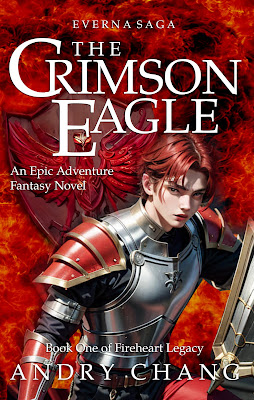Nidhogg
Níðhöggr
From Wikipedia, the free encyclopedia
Legendary Dragons - Norse MythologySource: http://en.wikipedia.org/wiki/Nidhogg
In Norse mythology, Níðhöggr (Malice Striker, often anglicized Nidhogg[1]) is a dragon who eats the roots of the World Tree, Yggdrasill.
Contents |
[edit] Prose Edda
According to the Gylfaginning part of Snorri Sturluson's Prose Edda, Níðhöggr or "Nidhogg Nagar" is a being which gnaws one of the three roots of Yggdrasill. This root is placed over Niflheimr and Níðhöggr gnaws it from beneath. The same source also says that "[t]he squirrel called Ratatöskr runs up and down the length of the Ash, bearing envious words between the eagle and Nídhöggr."[2]
In the Skáldskaparmál section of the Prose Edda Snorri specifies Níðhöggr as a serpent in a list of names of such creatures:
- These are names for serpents: dragon, Fafnir, Iormungand, adder, Nidhogg, snake, viper, Goin, Moin, Grafvitnir, Grabak, Ofnir, Svafnir, masked one. (Faulkes translation, p.137)
Snorri's knowledge of Níðhöggr seems to come from two of the Eddic poems: Grímnismál and Völuspá.
Later in Skáldskaparmál, Snorri includes Níðhöggr in a list of various terms and names for swords.[3]
[edit] Poetic Edda
The poem Grímnismál identifies a number of beings which live in Yggdrasill. The tree suffers great hardship from all the creatures which live on it. The poem identifies Níðhöggr as tearing at the tree from beneath and also mentions Ratatoskr as carrying messages between Níðhöggr and the eagle who lives at the top of the tree. Snorri Sturluson often quotes Grímnismál and clearly used it as his source for this information.
The poem Völuspá mentions Níðhöggr twice. The first instance is in its description of Náströnd.
| Eysteinn Björnsson's edition | Thorpe's translation | Dronke's translation | |
|---|---|---|---|
|
|
|
Níðhöggr is also mentioned at the end of Völuspá, where he is identified as a dragon and a serpent.
| Eysteinn Björnsson's edition | Bellows' translation | Dronke's translation | |
|---|---|---|---|
|
|
|
The context and meaning of this stanza is disputed. The most prevalent opinion is that the arrival of Níðhöggr heralds Ragnarök and thus that the poem ends on a tone of ominous warning.
Níðhöggr is not mentioned elsewhere in any ancient source.
[edit] Níðhöggr's name
In the standardized Old Norse orthography the name is spelled Níðhǫggr or Niðhǫggr but the letter 'ǫ' is frequently replaced with the Modern Icelandic 'ö' for reasons of familiarity or technical expediency.
The name can be represented in English texts as Nidhogg, Nidhoggr, Nithhogg, Nidhögg, Nidhöggr, Nithhöggr, Nídhöggr, Nithhoggr, Nidhhogg, Níðhögg, Niðhoggr, Níðhoggr, Nídhögg, Hidhaegg, or Nidhhoggr. The Modern Icelandic forms Níðhöggur and Niðhöggur are also sometimes seen and anglicized as Nidhoggur. The Danish form Nidhug or "Nidhøg" can also be encountered.
[edit] See also
[edit] Notes
- ^ While the suffix of the name, -höggr, clearly means "striker" the prefix is not as clear. In particular the length of the first vowel is not determined in the original sources. Some scholars prefer the reading Niðhöggr (Striker in the Dark).
- ^ Gylfaginning XVI, Brodeur's translation.
- ^ Faulkes translation, p.159
[edit] References
- Ásgeir Blöndal Magnússon (1989). Íslensk orðsifjabók. Reykjavík: Orðabók Háskólans.
- Bellows, Henry Adams. Translation of the Poetic Edda. Available at [1].
- Brodeur, Arthur Gilchrist (transl.) (1916). The Prose Edda by Snorri Sturluson. New York: The American-Scandinavian Foundation. Available online at http://www.northvegr.org/lore/prose/index.php.
- Dronke, Ursula (1997). The Poetic Edda : Volume II : Mythological Poems. Oxford: Clarendon Press. In particular p. 18 and pp. 124-5.
- Eysteinn Björnsson (ed.). Snorra-Edda: Formáli & Gylfaginning : Textar fjögurra meginhandrita. 2005. http://www.hi.is/~eybjorn/gg/
- Eysteinn Björnsson (ed.). Völuspá. http://www.hi.is/~eybjorn/ugm/vsp3.html
- Faulkes, Anthony (transl. and ed.) (1987). Edda (Snorri Sturluson). Everyman. ISBN 0-460-87616-3
- Finnur Jónsson (1913). Goðafræði Norðmanna og Íslendinga eftir heimildum. Reykjavík: Hið íslenska bókmentafjelag.
- Finnur Jónsson (1931). Lexicon Poeticum. København: S. L. Møllers Bogtrykkeri.
- Lindow, John (2001). Handbook of Norse mythology. Santa Barbara: ABC-Clio. ISBN 1576072177.
- Thorpe, Benjamin (tr.) (1866). Edda Sæmundar Hinns Froða : The Edda Of Sæmund The Learned. (2 vols.) London: Trübner & Co. Available online at http://www.northvegr.org/lore/poetic2/000.php
| |||||||||||||||||||||||||||||||||


Comments
Post a Comment